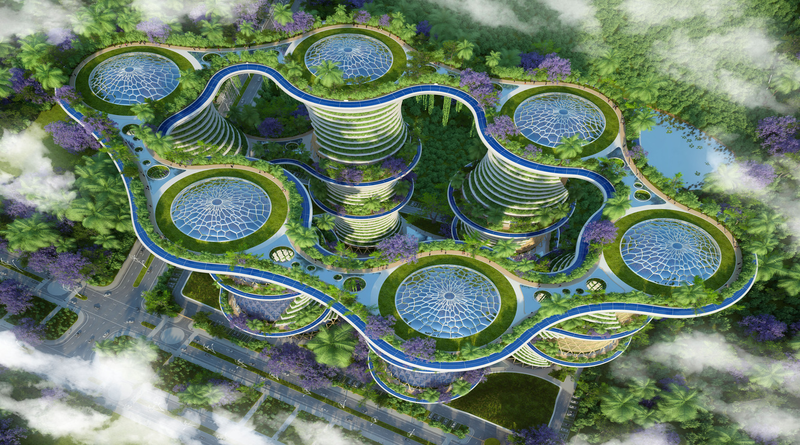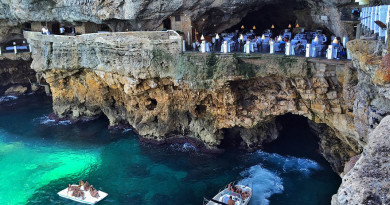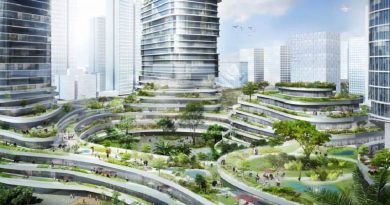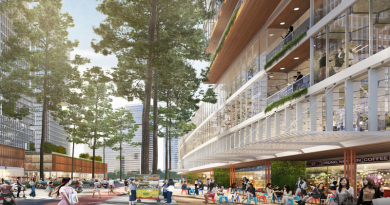Hyperions Eco-Neighborhood Produces Energy in India
Agroecologist Amlankusum, together with Paris-based Vincent Callebaut Architectures, has created Hyperions, a vertical, energy positive eco-neighborhood proposed for Jaypee Green Sports City in the Delhi National Capital Region (NCR) in India. Aiming to “reconcile urban renaturation and small-scale farming with environment protection and biodiversity,” the project combines low-tech and high-tech elements with the “objective of energy decentralization and food deindustrialization.”
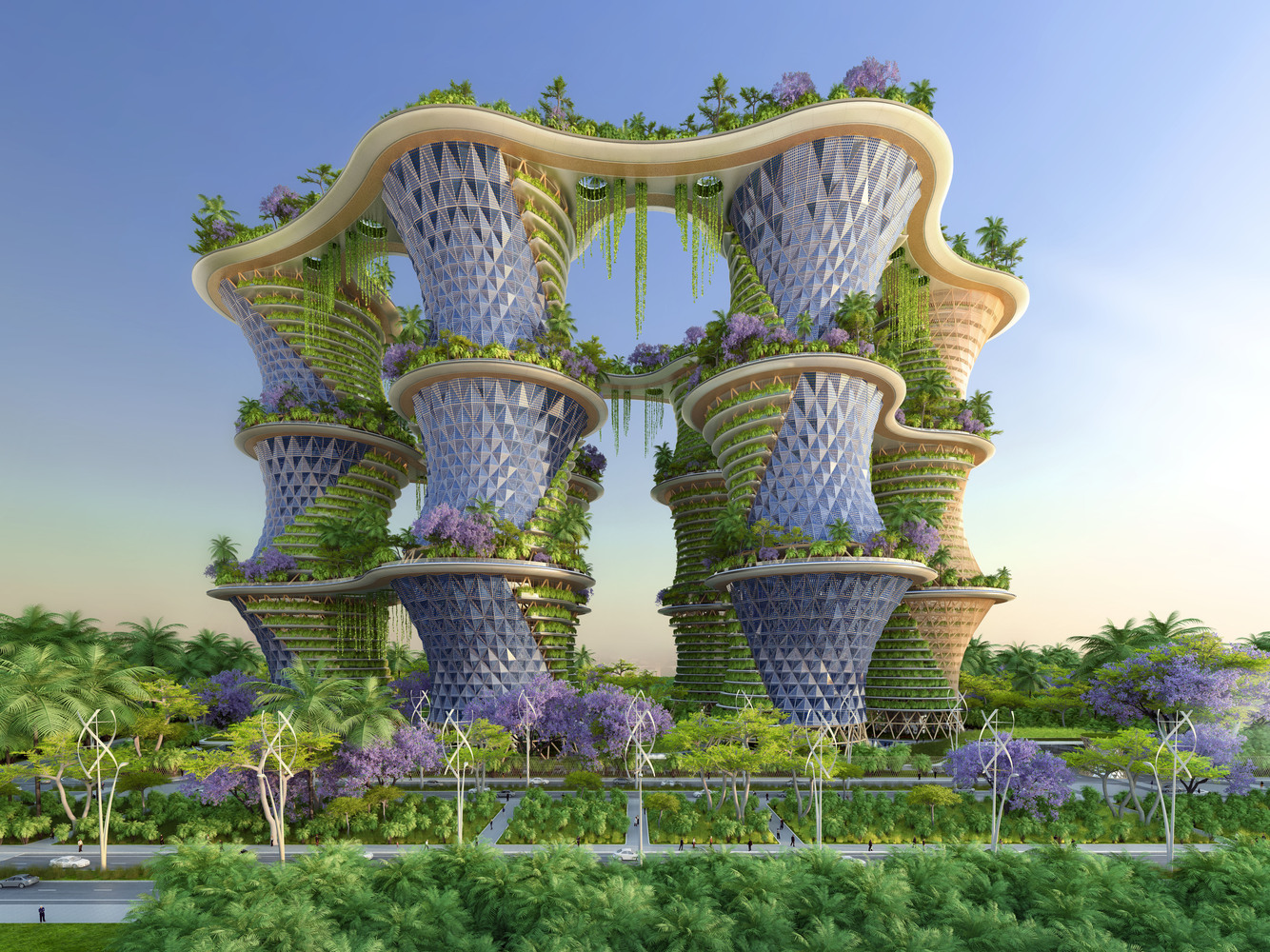
Hyperions is comprised of six, 36-story garden towers, each of which houses a combination of residential and office spaces. The towers are built with Delhi-farmed cross-laminated timber (CLT), and are covered with orchard gardens. Wood was chosen as the project’s base “because it is the material that provides the best environmental footprint during its lifecycle—from harvesting to recycling, through transportation, processing, implementation, maintenance, and reuse.” Thus, by utilizing wood instead of materials like steel or concrete, the emission of 1.1 tons of CO2 per cubic meter can be avoided.
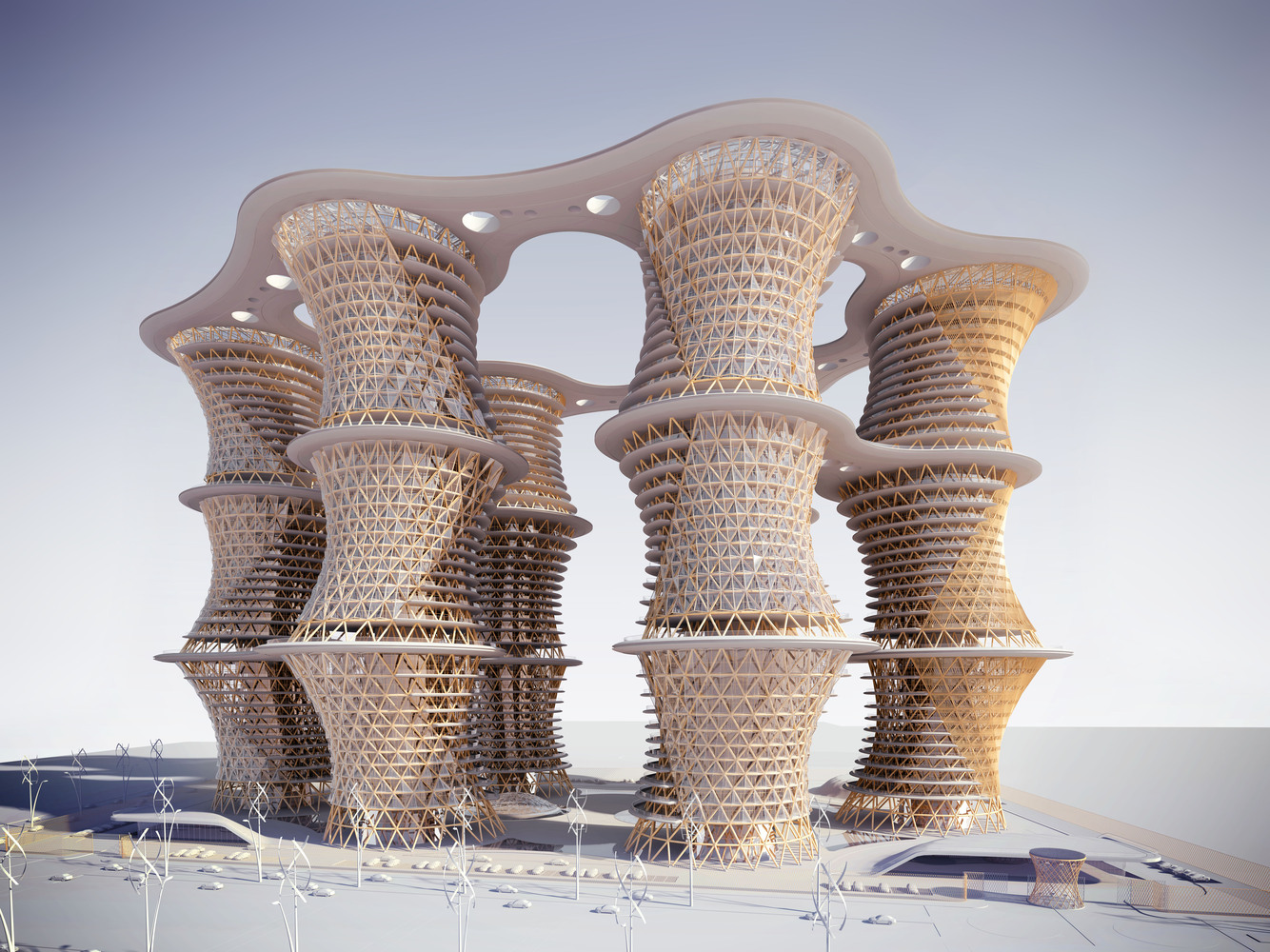
In order to optimize the buildings, “steel and concrete substructures for earthquake-resistant foundations, parking areas, and vertical core bases,” as well as a “superstructure made of solid wood columns, beams, and walls reinforced with steel blades where columns and beams meet” are added to the wood framework. “This mixed structure is reputed for its strong mechanical resistance, including in the event of earthquakes, for its high resistance to fire, and for its high acoustic and thermal performance.”
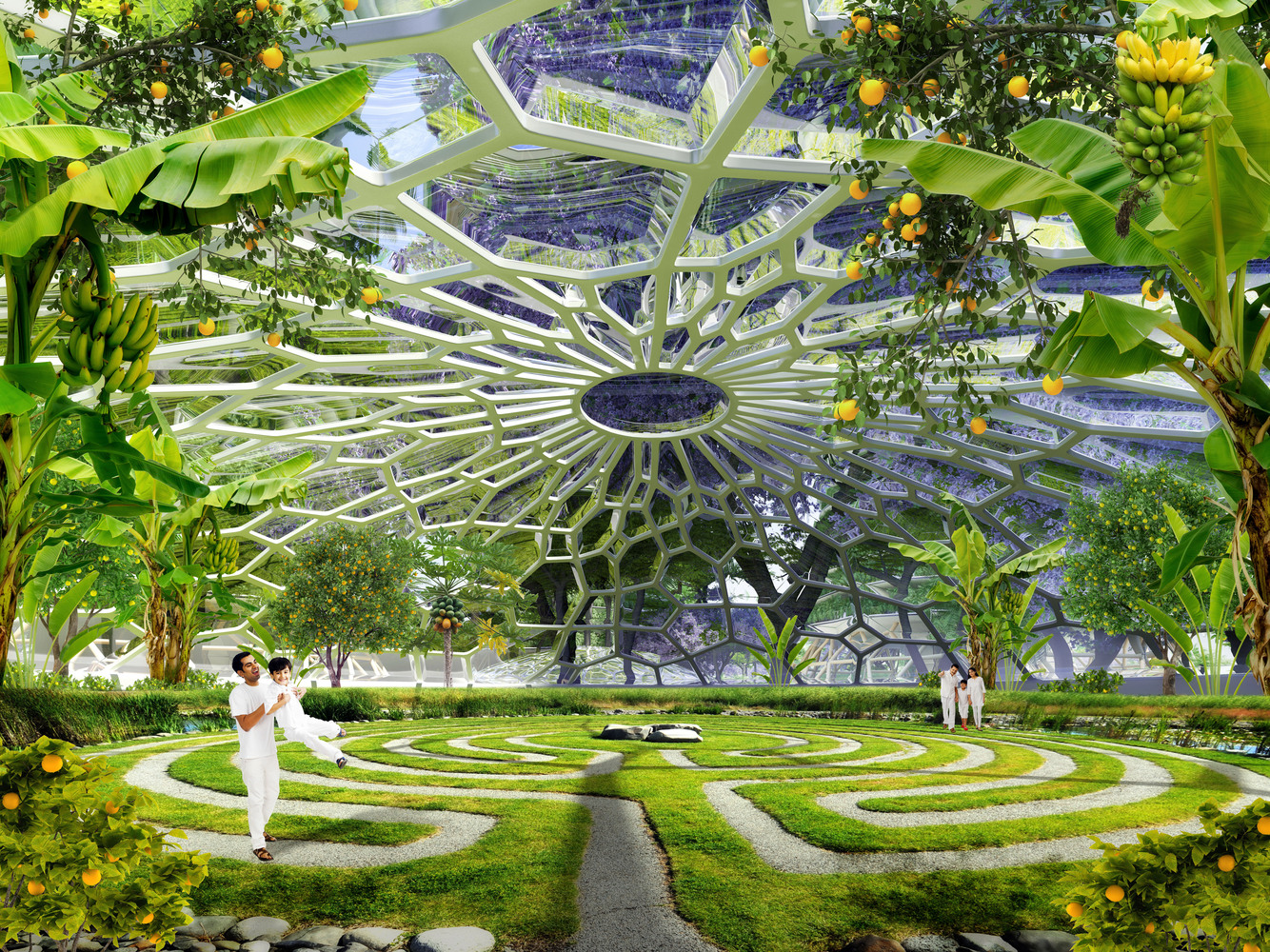
Operational energy—energy for lighting, climate control, water heating, et cetera—is produced on-site, for example through wind lampposts that produce their own electricity through magnetic-levitation vertical-axis wind turbines (VAWTs) integrated into their poles.
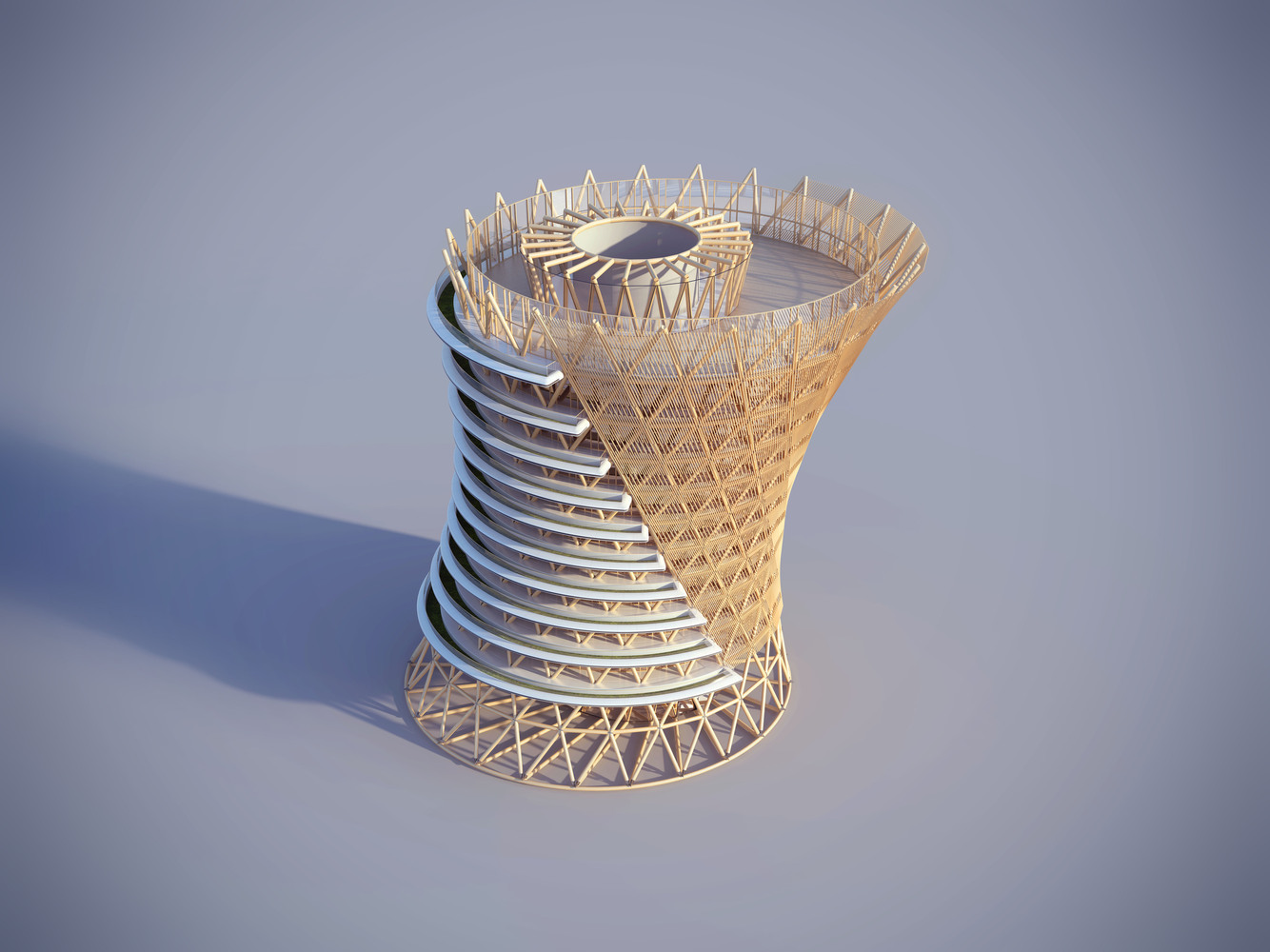
Climate control throughout the buildings mimics that of a termite mound through vertical circulation cores of wind chimneys. “The system takes advantage of the earth’s thermal inertia, which remains stable at 18 degrees Celsius all year round. Through natural airflow, the external air—which can reach 45 degrees Celsius and fall to 3 degrees Celsius in the winter—is therefore naturally cooled or heated in contact with the earth, and so without using a single kilowatt of electricity.
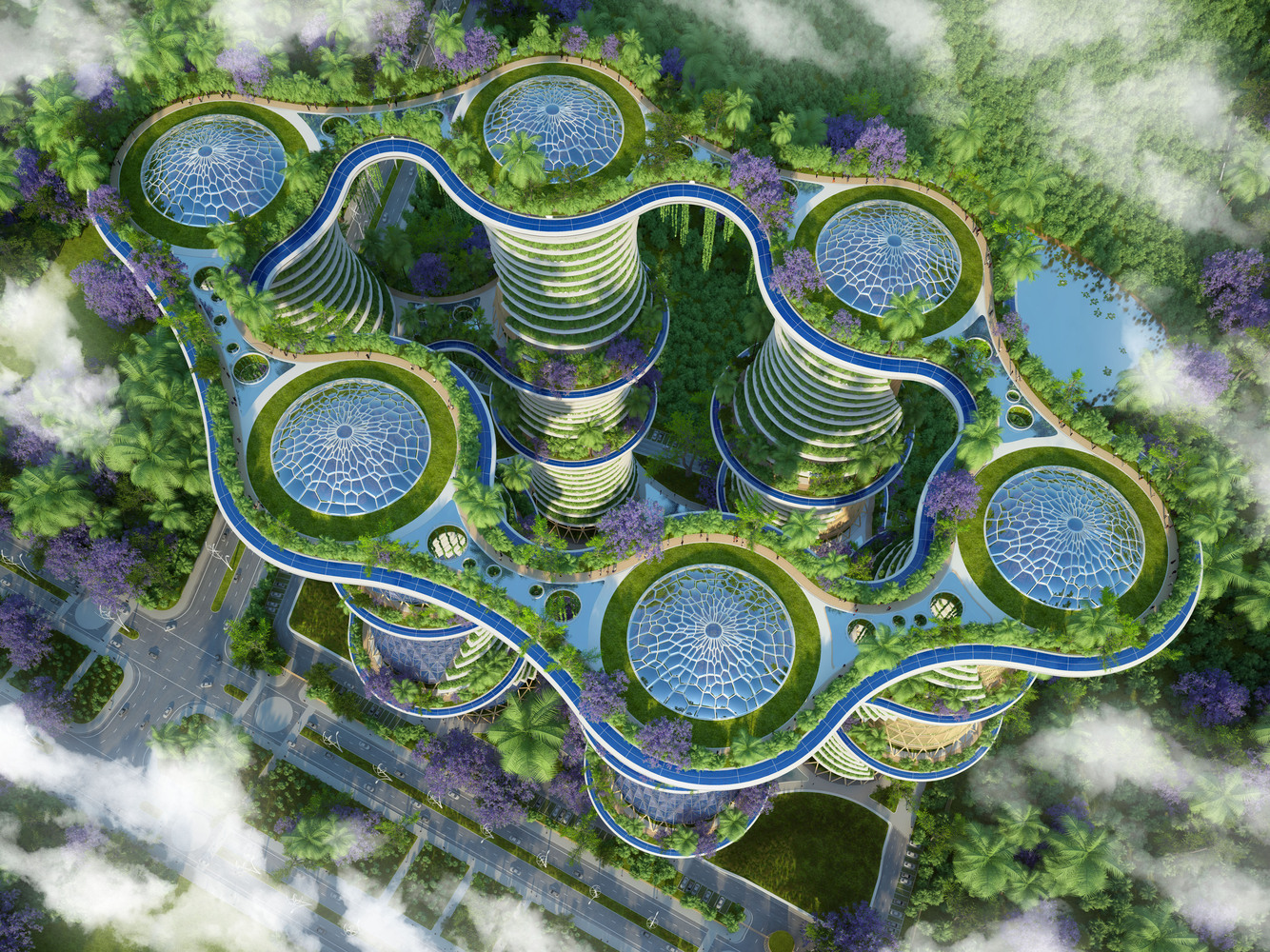
A network of suspended footbridges connects the towers, converging under a large orchard roof that serves as a community meeting place.
Source: archdaily




